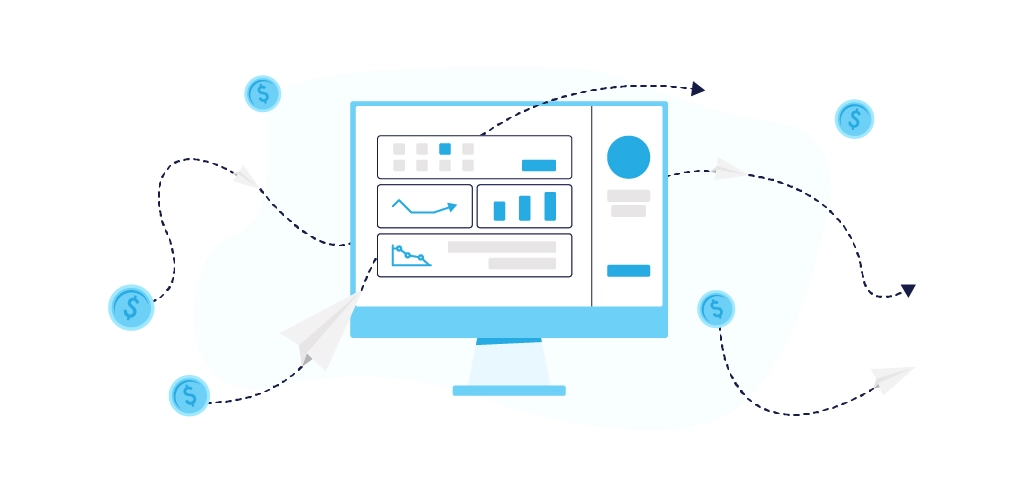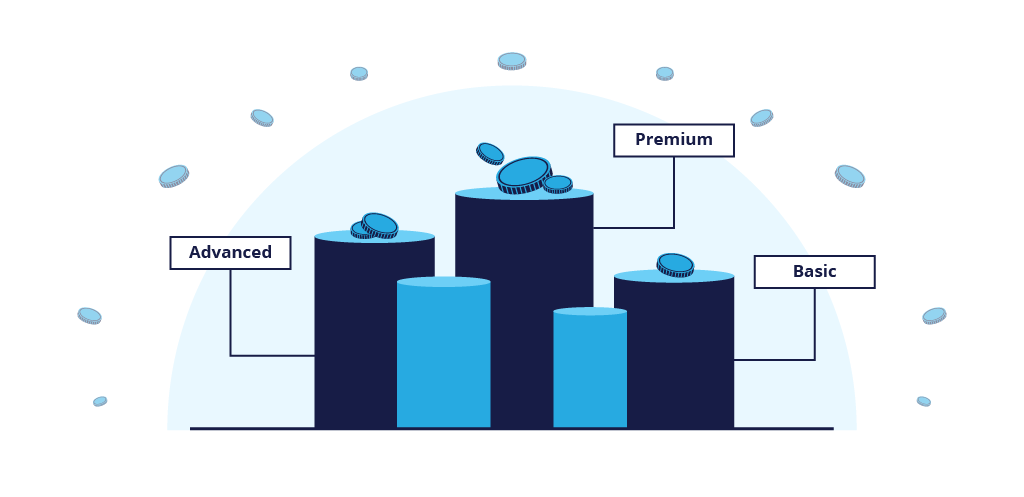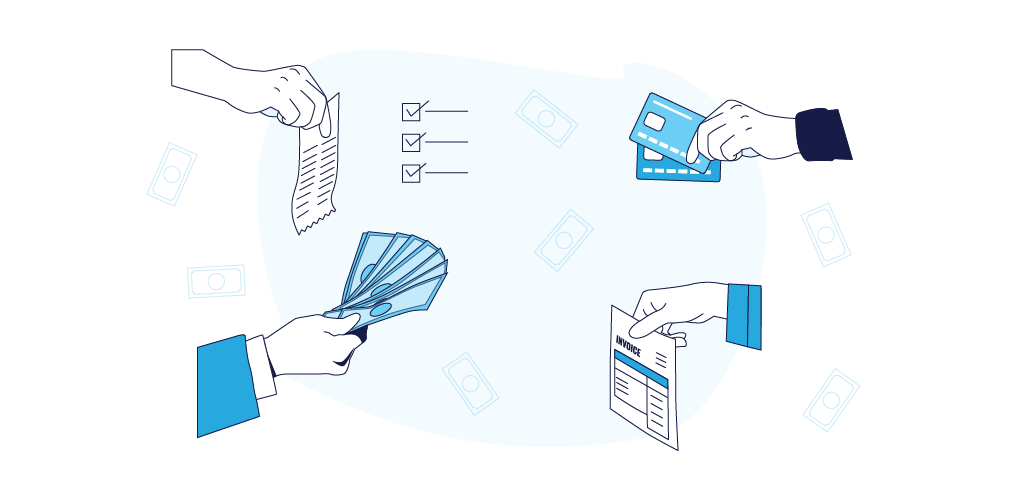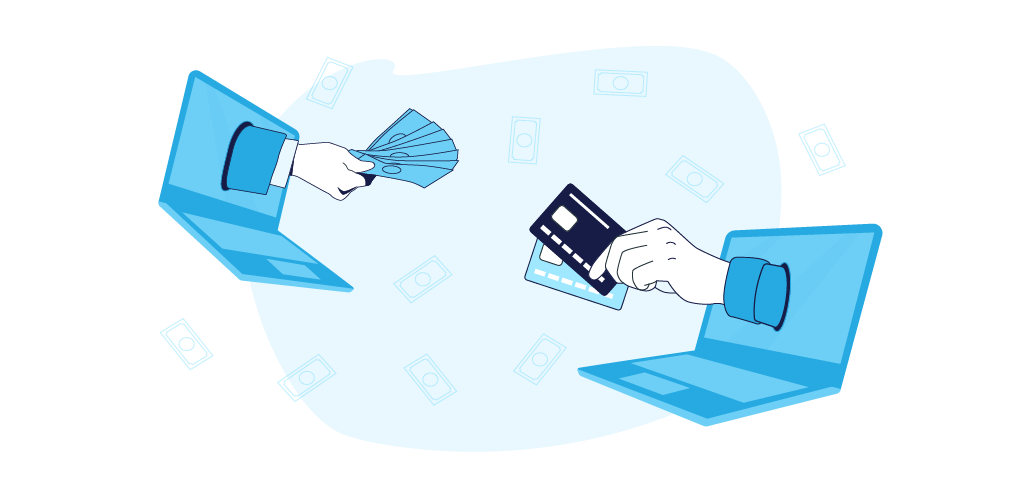Want to master the recurring revenue business model? Get expert tips and level up your business.
Table of contents
Recurring business revenue model has become increasingly popular in the digital age due to its potential for stable and growing income.
In a recurring revenue model, businesses use recurring billing to automatically invoice, charge, and collect recurring payments from customers for ongoing access to products or services.
This approach ensures a dependable and predictable revenue stream that supports financial stability and growth of recurring revenue businesses.
In this blog, we delve into various recurring revenue models, examining their advantages and disadvantages and providing examples.
Key Notes
- Recurring revenue business model is where a company charges its customers a specific amount regularly.
- This model is characterized by periodic payments, automatic billing and payment processing, different pricing models, and a focus on building long-term customer relationships.
- Common recurring revenue business models include subscription-based, freemium, usage-based, user-based, tiered, and memberships.
- Recurring revenue model has emerged as a robust and sustainable approach for businesses to thrive in today’s dynamic marketplace.
- It offers numerous benefits, including revenue predictability, customer loyalty, and the potential for long-term growth.
What Is Recurring Revenue Business Model
A recurring revenue business model (or recurring revenue model) is a business model where a company charges its customers regularly in exchange for ongoing access to a product or service.

But what is recurring revenue? It is the income a business generates from its customers regularly.
The recurring revenue model is often associated with subscription-based businesses but can also be applied in other industries. It contrasts traditional transactional business models where companies rely on one-time sales.
Here are some of the characteristics of a recurring revenue model:
- Customers are charged periodically (e.g., monthly, quarterly, annually)
- Customers enjoy uninterrupted access to products or services if the subscription is active.
- It involves automated billing and payment collection processes.
- Companies get repeat business based on customer renewals.
- It is flexible and adaptable to various industries and niches.
- Businesses with recurring revenue aim to build long-term relationships with customers.
- It often offers different subscription levels that allow customers to choose plans that suit their needs and budgets.
Recurring Revenue Business Models
There are different recurring revenue business models. We’ll focus on the following:
- Subscription-based model
- Usage-based model
- User-based model
- Tiered model
- Freemium model
- Membership model

We will provide an overview of each model, examining their pros and cons and highlighting examples of recurring revenue businesses that use them.
1. Subscription-based Model
In a subscription-based model, customers pay a fixed subscription fee at regular intervals, such as monthly or annually, to access a product or service.
This recurring business model creates a predictable and consistent income stream. It also builds customer loyalty through continuous access to the products.
However, it may have a high initial customer acquisition cost and a high potential for customer churn, which may negatively impact the recurring business.
Example: Netflix uses this model to provide on-demand streaming of movies and TV shows as customers pay a monthly fee to access the platform’s content library.
2. Usage-based Model
Usage-based model implements usage-based billing, where customers are charged based on the usage or consumption of recurring revenue products or services. This revenue stream is widely used in the SaaS industry.
It allows businesses to align their revenue with customer usage and potentially drive increased usage through flexible pricing. It also benefits customers as they only pay for what they use.
Sometimes, customers may be hesitant if they can’t predict costs.
Example: Amazon Web Services (AWS) charge customers based on the cloud computing resources (data storage & processing) they use.
Software & Saas: Unlocking Its Full Potential

3. User-based Model
Customers are charged based on the number of users accessing the product or service within a specified period.
It has transparent pricing based on user count and is scalable for recurring B2B businesses with different sizes.
The disadvantage of this model is that it may discourage your business growth if there are few users, and customers with many users may find it expensive.
Example: Slack charges per user, making it suitable for businesses with various team sizes.
4. Tiered Model
A tiered model provides different pricing tiers of varying features and benefits for the product or service. Depending on the features, companies create basic, professional, and enterprise plans for their customers.
It appeals to a broader range of customers with varying needs and budgets. Also, it encourages customers to upgrade for more value, expanding recurring revenue streams.
Managing multiple tiers can sometimes be complex, and customers might find it confusing to choose the correct tier.
Example: Mailchimp offers different pricing tiers based on the size of the user’s email list and the features they need.
5. Freemium Model
A freemium business model combines a product or service’s free and premium (paid) versions. Here, a basic version of a product or service is offered for free to a wide audience, while a more advanced or feature-rich version (the “premium” version) is provided for a fee, creating a recurring revenue stream.
It attracts a large user base with the free offering and can easily convert free users into paying customers through upselling.
The downside of this model is that it requires careful balance to ensure free users get value.
Example: Dropbox offers a free storage plan with limited space and a premium subscription for additional storage and features.
6. Membership Model
Customers pay a recurring fee to become members and gain access to exclusive benefits or content of a service.
The membership business model strengthens customer loyalty and provides opportunities for upselling as customers get a sense of ownership and community.
On the flip side, attracting and retaining members can be challenging as it must continually deliver value to justify membership fees.
Example: This is common in the health and fitness industry, such as gym memberships.
Case Studies and Success Stories
Recurring revenue model has worked and is providing immense value to companies in different industries.
Here are some 3 real-world examples of companies that adopted this model and have seen tremendous growth.
| Company | Industry | Type of RRM | Description |
|---|---|---|---|
| Adobe Creative Cloud | Software & Creative Tools | Subscription-based Model | Adobe transitioned from selling software licenses to a subscription-based model with Creative Cloud. |
| Amazon Prime | E-commerce & Entertainment | Membership-based Recurring Revenue | Amazon Prime offers a membership-based recurring revenue model, providing customers with benefits like free two-day shipping, access to streaming services, and exclusive deals. |
| Salesforce | CRM Platform | Subscription-based Model (SaaS) | Customers pay a regular subscription fee to access Salesforce’s services. |
Benefits of Recurring Revenue Model
Recurring revenue business models are increasingly being adopted.
In fact, 80% of businesses are predicted to use a subscription-based model, indicating the value companies get from these models.

Below are some of the benefits:
- Provide consistent and stable cash flow
- Improve revenue forecasting
- Encourage customer retention and maximize customer lifetime value
- Facilitate expansion and scalability of the business due to steady cashflow
- Attract the interest of potential investors
Challenges In Recurring Revenue Model
Building a sustainable recurring revenue model can be challenging!
For instance, determining the right pricing structure can be difficult, especially for businesses with usage-based models. It would be best if you struck a balance between affordability and profitability.
Also, as your customer base grows, scaling your infrastructure to handle increased demand can pose challenges. Ensure that your systems, processes, and customer support capabilities can accommodate growth without compromising quality or customer experience.
Additionally, retaining customers in a recurring revenue model is crucial. High churn rates can significantly impact revenue and growth. Mitigate churn by providing exceptional customer service and addressing customer concerns proactively.
Tackling Recurring Revenue Challenges
To ensure the success of recurring revenue business, here are some of the strategies that you can use to understand how to build a recurring revenue model:
- Prioritize customer satisfaction and success throughout their journey by providing excellent support to help them achieve their desired outcomes.
- Stay updated with industry trends, gather customer feedback, and invest in research and development to ensure your product or service remains relevant and compelling.
- Utilize data and analytics to make informed decisions by monitoring key metrics, such as customer churn, lifetime value, and acquisition costs, to identify areas for improvement and optimize your recurring revenue strategies.
Implementing Recurring Revenue Model
Implementing a recurring revenue model involves some crucial steps:
- Conduct product and market analysis to understand the target market’s needs and how your product or service addresses those needs.
- Determine the optimal pricing structure that balances customer affordability and business profitability.
- Focus on customer acquisition and retention by implementing effective marketing and sales strategies, providing exceptional customer service, and offering incentives for loyalty and referrals.
- Utilize a robust and secure billing and payment system that is user-friendly.
Empowering Your Business Using Recurring Revenue Software
As businesses continue to innovate, the recurring revenue business model will undoubtedly remain a cornerstone of modern businesses, especially for companies with high recurring revenue.
In fact, businesses that generate recurring revenue rely on software to manage revenue models.
Tridens Monetization is the ultimate solution for managing recurring revenue. It efficiently charges customers, collects payments, and handles subscriptions with ease, ensuring a smooth and seamless process.
FAQs
Yes, it involves providing software applications on a subscription basis, generating regular and predictable income. Saas monetization models typically bill customers on a recurring basis, such as monthly or annually, in exchange for access to the software and its ongoing updates and support.
Recurring revenue is calculated by multiplying the number of active customers or subscribers by the average revenue generated from each customer over a specified period (e.g., monthly or annually).
The success of a recurring revenue business model can be measured by metrics such as customer retention rate, customer lifetime value (CLV), monthly recurring revenue (MRR) growth, and churn rate. High retention, increasing CLV, and positive MRR growth over time indicate a successful model.
Risks and challenges associated with the recurring revenue model include customer churn, maintaining value and relevance over time, managing billing and collections, and potential dependency on customer retention.
Ready to get started?
Learn how your business can thrive with Tridens Monetization for Software & SaaS.
Schedule a Demo







